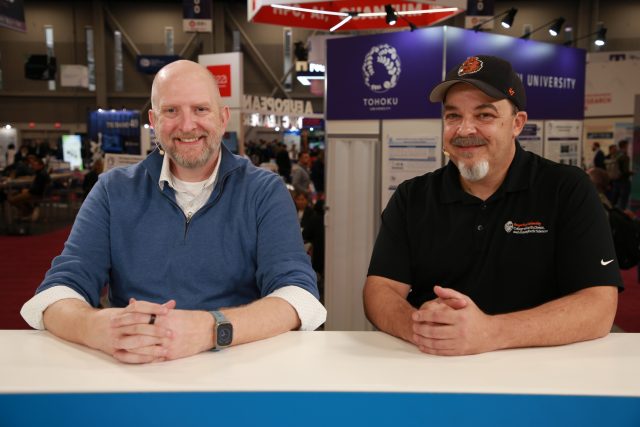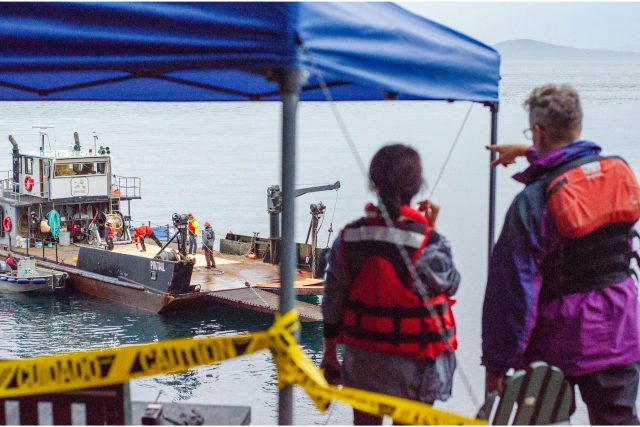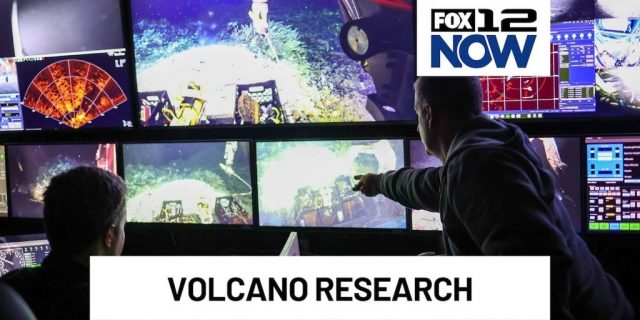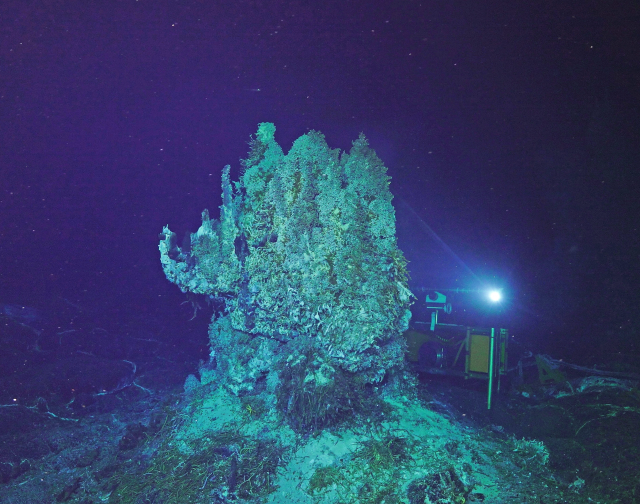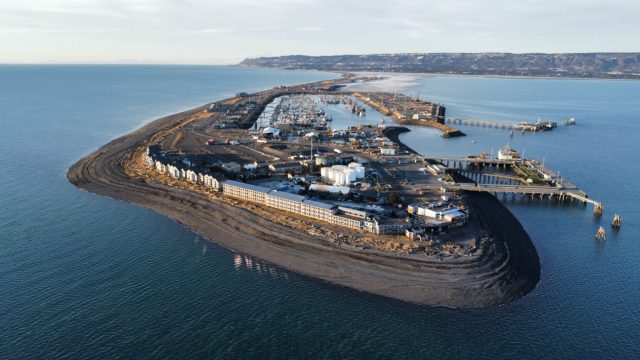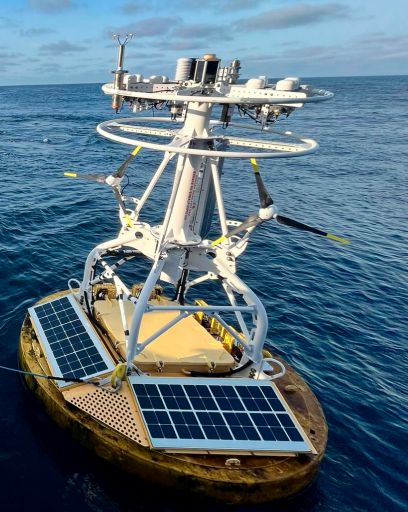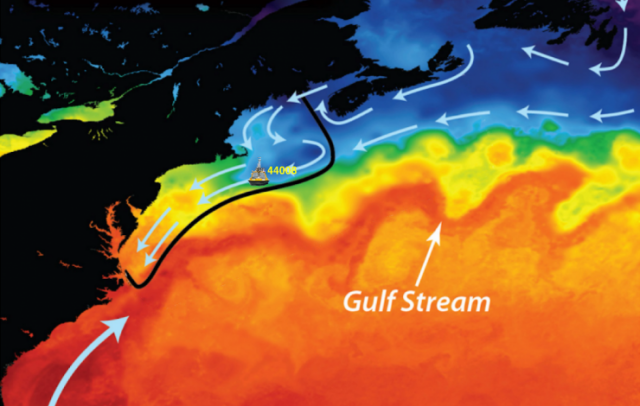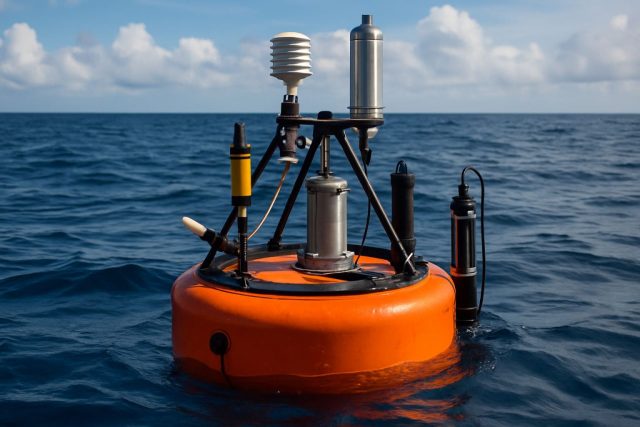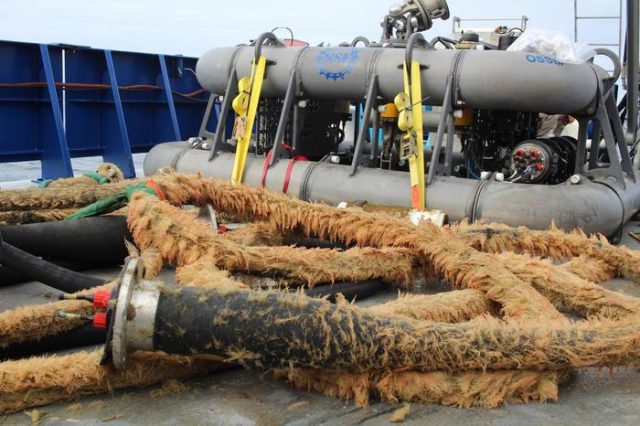OOI In The News
AI at sea: Dell and Oregon State dig deep to power the next wave of ocean discovery
The future of ocean science is arriving on the bow of a $150 million research vessel — complete with an onboard data center, AI-driven sampling tools and a new blueprint for how supercomputing meets ocean science. Read more from siliconANGLE.
Read MoreUW researcher launches new technology for underwater acoustics
Earlier this month, a UW researcher deployed fiber optic cables — which are cables used to rapidly transmit audio and video data — into the Puget Sound, opening the floor for innovative research into marine mammals.
The fiber optic cable system was developed in the UW Ocean Data Lab, run by professor Shima Abadi. Abadi’s research focuses on passive underwater acoustics in oceanography, or listening for noises in the ocean.
A hydrophone, or underwater microphone, is typically used to record acoustics. The Ocean Observatories Initiative, a project funded by the National Science Foundation, has recorded underwater data for 10 years to observe long term trends in ocean ambient noise in Oregon and Washington. Read more from THEDAILY.
Read MoreThis research vessel studies an underwater volcano off Oregon’s coast
The Research Vessel Atlantis is a ship currently around 300 miles off of the Oregon Coast, as it monitors the Axial Seamount underwater volcano and replaces sensors and equipment that are part of the Regional Cabled Array. Read more from Fox 12 Oregon.
Read MoreScientists play a waiting game with a giant volcano off the West Coast
Seismologists tapped into the fiber optic cable network to study offshore faults
The Pacific Northwest boasts an extensive network of more than 600 seismic monitoring stations that help researchers track tectonic and volcanic phenomena, including earthquakes. This data provides key insights into regional faults and feeds into early warning systems, which can give a community precious moments to prepare before a natural disaster strikes. Read more from the UW News.
Read MoreSecuring and serving data that drives global research insights
Dell AI Factory was chosen by Oregon State University to manage protect and disperse vast amounts of critical data to support vital global scientific research for the National Science Foundation (NSF) funded Ocean Observatories Initiative. And it’s now able to future-proof infrastructure to keep pace with AI advancements and protect itself from complex cyber threats. Read more from Dell Technologies.
Read MoreCoastal Weather Buoy Enhancement
On May 9, 2025, a research-enhanced weather buoy was deployed at 40.50°N 69.25°W for an expected observing period of one year. Working alongside a team of engineers and technicians at the National Data Buoy Center (NDBC), Dr. Yolande Serra’s (UW/CICOES) project has enhanced weather buoy 44008 with additional surface and subsurface sensors. Read more from Pacific Marine Environmental Laboratory.
Read MoreOceanic Biogeochemical Sensor Networks: 2025 Market Surge & Next-Gen Tech Unveiled
Scientists use salinity to trace changes in the US Northeast Coastal Ocean
Woods Hole, Mass. (May 19, 2025) — The near-bottom water on the U.S. Northeast continental shelf provides a critical cold-water habitat for the rich regional marine ecosystem. This “cold pool” preserves winter temperatures, even when waters become too warm or salty elsewhere during the summer. Read more from EurekAlert.
Read MoreMile-wide underwater volcano ready to erupt off the West Coast
Things are heating up hundreds of miles off the coast of Oregon, where a large undersea volcano is showing signs of impending eruption, scientists say.
The volcano, known as Axial Seamount, is located nearly 1 mile (1.4 kilometers) underwater on a geological hot spot, where searing gushes of molten rock rise from Earth’s mantle and into the crust. Hotspot volcanoes are common on the seafloor. But Axial Seamount also happens to be located on the Juan de Fuca Ridge — an area where two massive tectonic plates (the Pacific and the Juan de Fuca plates) are constantly spreading apart, causing a steady buildup of pressure beneath the planet’s surface. Read more from CNN.
Read More
